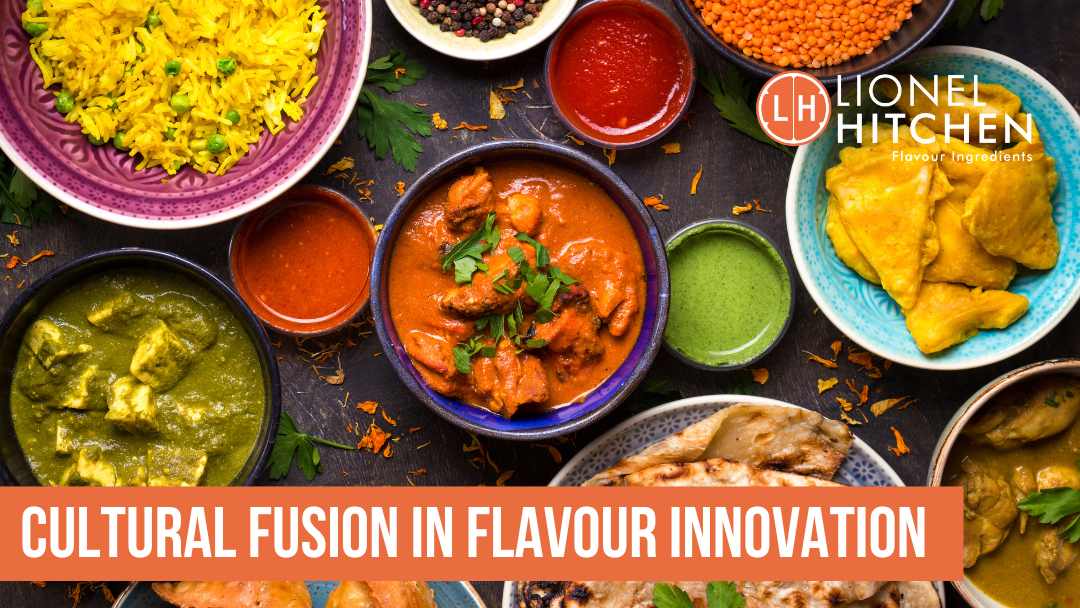The flavour industry has been experiencing a remarkable transformation, driven by the fusion of diverse culinary traditions and innovative approaches to flavour creation. This cultural fusion has given rise to exciting new taste experiences that captivate consumers and push the boundaries of traditional flavour profiles.
Cross-cultural flavour mash-ups
One of the most intriguing trends in flavour innovation is the emergence of cross-cultural flavour mash-ups. These innovative combinations blend familiar tastes with exotic elements, creating unique and exciting flavour experiences. Many 2024 food trend reports, including those from IFT Magazine, Datassential, Restaurant Business, and Time, have identified global mash-ups as a key way for chefs to create “newstalgia” by elevating familiar classics with an updated flavour twist.
The key to creating fresh concepts that remain approachable to a wide range of consumers is to combine the new ingredient or flavour profile with the familiar. By leveraging cuisines that consumers already love, such as Mexican or Indian, or favourite formats like burgers or pizza, companies can introduce novel techniques or flavours while maintaining a sense of familiarity.
For example, a dish like dal, which is familiar to consumers who frequent Indian restaurants or make Indian food at home, could be introduced to new audiences by incorporating it into a familiar dish like a baked potato. This approach not only broadens the appeal of traditional flavours but also creates exciting new taste experiences for consumers.
Traditional ingredients in modern contexts
Another aspect of cultural fusion in flavour innovation involves the use of traditional ingredients in modern contexts. This approach allows companies to tap into the rich culinary heritage of various cultures while adapting it to contemporary tastes and preferences.

One example of this trend is the growing popularity of pandan, a fragrant plant originating from Southeast Asia. Known as the ‘vanilla of the East’, pandan leaves are widely used in Southeast Asian cooking to add a unique sweet and floral flavour to dishes. As this ingredient gains recognition in Western markets, it has the potential to become the next big trend in global cuisine, offering a new and exciting flavour profile for innovative products.
Similarly, calamansi, a citrus fruit native to the Philippines, is making waves in the flavour industry. This tiny, tangerine-like fruit is renowned for its intense sourness and remarkable versatility, becoming an indispensable ingredient in Filipino cuisine. The juice of calamansi, which offers a refreshing fusion of lime and tangerine flavours, is being used to add a vibrant citrus burst to marinades, sauces, and beverages.
Global street food influences
Street food represents the heart of a culture’s culinary traditions and often serves as a source of inspiration for new and exciting flavour combinations.
Half of consumers express a desire for products in supermarkets and online stores that have been inspired by street food trends[1]. This consumer interest has led to the development of products that bring the excitement of street food to the retail market.
The trend of incorporating street food flavours extends beyond retail products to restaurant menus as well. Exotic dishes from West Africa, Southeast Asia, including the Philippines are gaining popularity, offering a fusion of flavour and culture in every bite. For example, Yassa, a zesty dish originating from the Senegambian region of West Africa, is fast becoming a taste sensation across the globe. This vibrant dish typically features marinated chicken or fish, simmered in a tangy sauce of onions, garlic, mustard, and lemon, resulting in a tantalising blend of sweetness, acidity, and a hint of heat.

Photo: Skittles
The trend of cultural fusion in flavour innovation is also evident in the harmonisation of contrasting taste profiles. Companies are exploring ways to balance sweet and savoury notes in a single culinary experience. This approach has led to the creation of innovative products that combine seemingly disparate flavours. For instance, French’s Mustard released limited edition Mustard Skittles that blend sweet and savoury flavours, while ice cream flavours now include combinations like whiskey and pecan pralines or chicken and waffles, offering a mix of sweet and savoury tastes along with creamy and crunchy textures.
Some of the most enduring mashup cuisines, such as British-Indian and American-Chinese, were created by immigrants who put their own spin on familiar ingredients and flavours in their new homes. These fusion cuisines have remained popular and continue to serve as a recipe for success in culinary innovation.
Lionel Hitchen’s Culinary Journey Through World Cuisines
As consumers become increasingly adventurous in their culinary preferences, the flavour industry has an opportunity to create products that cater to this growing interest in global tastes. Two-thirds of consumers report that they are open to trying new global cuisines[1]. This openness has led to the development of products that bring specific regional flavours to new markets.
The trend of cultural fusion in flavour innovation reflects a broader shift in consumer behaviour and preferences. Lionel Hitchen recognizes this shift and provides an extensive selection of flavours and flavour ingredients sourced from diverse origins, influenced by global cuisines. The HiTaste range draws inspiration from pioneering international cuisines and their traditional recipes. Additionally, the Tropical range introduce unique tastes from around the world, delivering a distinctive experience for new product development.
Source
- Innova Market Insights – Global Flavour Trends
- The Food People – Cuisines & Ingredients – Trend Predictions 2024/25
- The Food People – 2023/24 Trend Predictions






